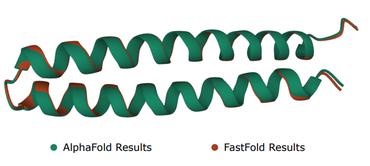Search Results for author: Alexandre Duval
Found 8 papers, 6 papers with code
A Hitchhiker's Guide to Geometric GNNs for 3D Atomic Systems
1 code implementation • 12 Dec 2023 • Alexandre Duval, Simon V. Mathis, Chaitanya K. Joshi, Victor Schmidt, Santiago Miret, Fragkiskos D. Malliaros, Taco Cohen, Pietro Liò, Yoshua Bengio, Michael Bronstein
In these graphs, the geometric attributes transform according to the inherent physical symmetries of 3D atomic systems, including rotations and translations in Euclidean space, as well as node permutations.
On the importance of catalyst-adsorbate 3D interactions for relaxed energy predictions
no code implementations • 10 Oct 2023 • Alvaro Carbonero, Alexandre Duval, Victor Schmidt, Santiago Miret, Alex Hernandez-Garcia, Yoshua Bengio, David Rolnick
The use of machine learning for material property prediction and discovery has traditionally centered on graph neural networks that incorporate the geometric configuration of all atoms.
Crystal-GFN: sampling crystals with desirable properties and constraints
1 code implementation • 7 Oct 2023 • Mila AI4Science, Alex Hernandez-Garcia, Alexandre Duval, Alexandra Volokhova, Yoshua Bengio, Divya Sharma, Pierre Luc Carrier, Yasmine Benabed, Michał Koziarski, Victor Schmidt
Accelerating material discovery holds the potential to greatly help mitigate the climate crisis.
FAENet: Frame Averaging Equivariant GNN for Materials Modeling
1 code implementation • 28 Apr 2023 • Alexandre Duval, Victor Schmidt, Alex Hernandez Garcia, Santiago Miret, Fragkiskos D. Malliaros, Yoshua Bengio, David Rolnick
Applications of machine learning techniques for materials modeling typically involve functions known to be equivariant or invariant to specific symmetries.
PhAST: Physics-Aware, Scalable, and Task-specific GNNs for Accelerated Catalyst Design
2 code implementations • 22 Nov 2022 • Alexandre Duval, Victor Schmidt, Santiago Miret, Yoshua Bengio, Alex Hernández-García, David Rolnick
Catalyst materials play a crucial role in the electrochemical reactions involved in numerous industrial processes key to this transition, such as renewable energy storage and electrofuel synthesis.
Higher-order Clustering and Pooling for Graph Neural Networks
1 code implementation • 2 Sep 2022 • Alexandre Duval, Fragkiskos Malliaros
Graph Neural Networks achieve state-of-the-art performance on a plethora of graph classification tasks, especially due to pooling operators, which aggregate learned node embeddings hierarchically into a final graph representation.
GraphSVX: Shapley Value Explanations for Graph Neural Networks
1 code implementation • 18 Apr 2021 • Alexandre Duval, Fragkiskos D. Malliaros
Graph Neural Networks (GNNs) achieve significant performance for various learning tasks on geometric data due to the incorporation of graph structure into the learning of node representations, which renders their comprehension challenging.
Breaking Writer's Block: Low-cost Fine-tuning of Natural Language Generation Models
no code implementations • EACL 2021 • Alexandre Duval, Thomas Lamson, Gael de Leseleuc de Kerouara, Matthias Gallé
It is standard procedure these days to solve Information Extraction task by fine-tuning large pre-trained language models.





